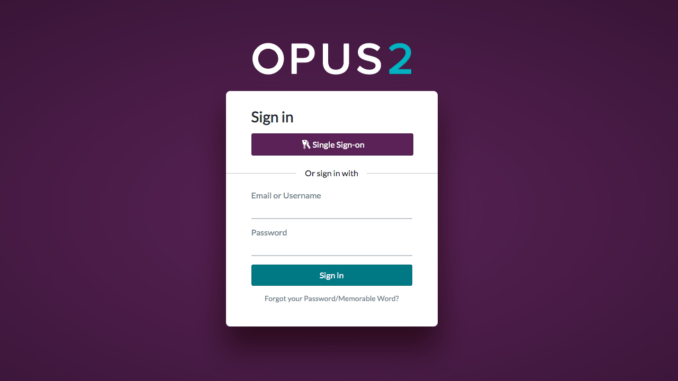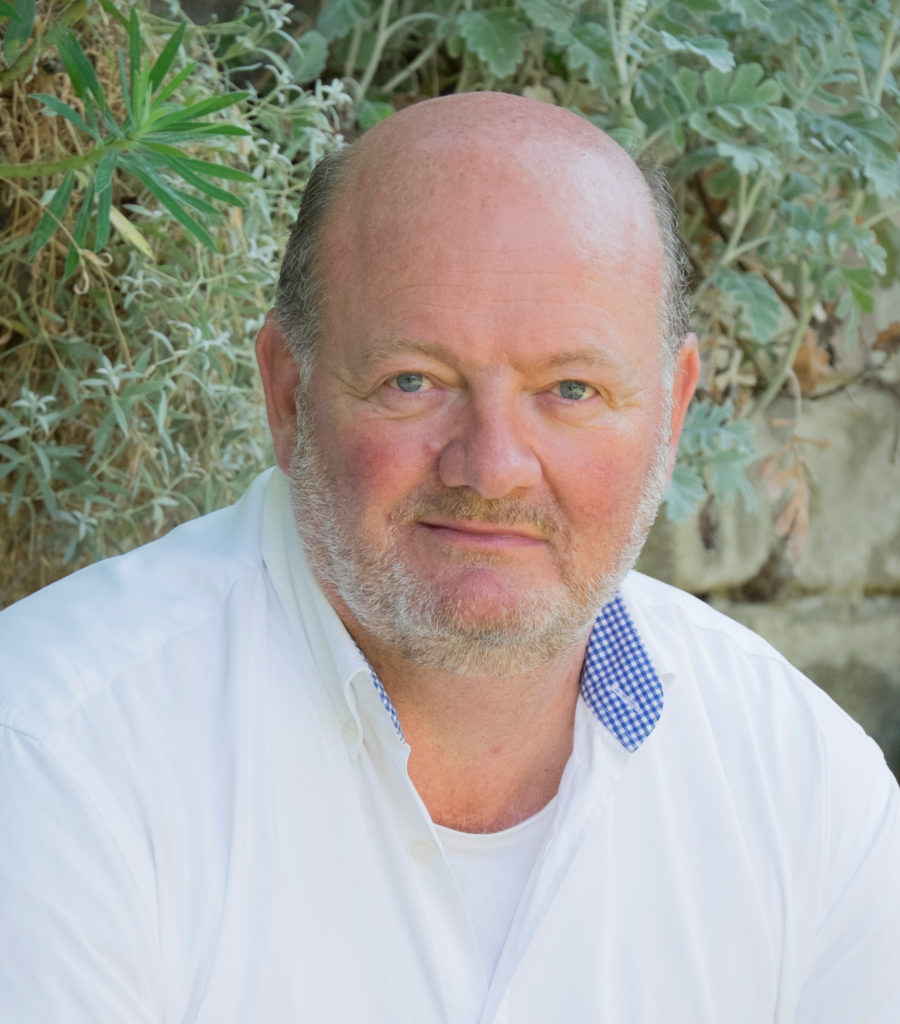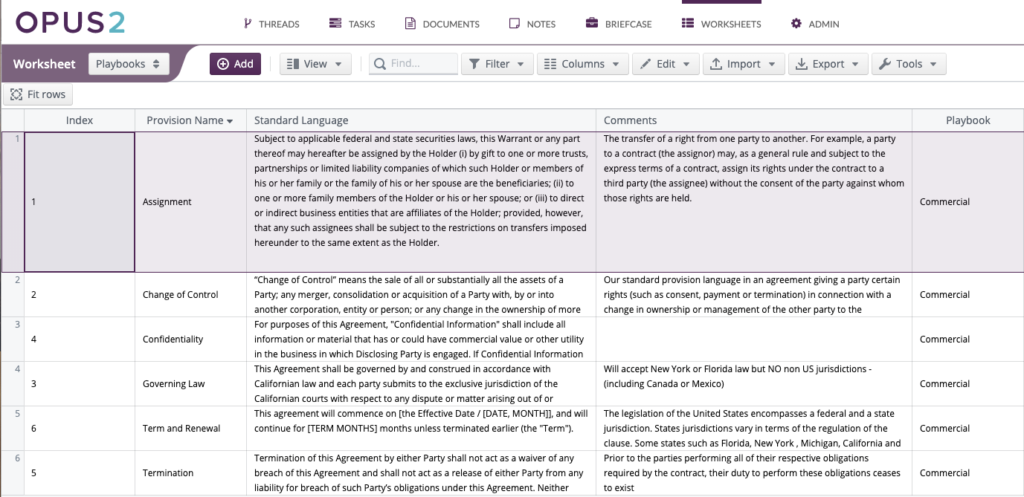
You may have already heard of the Opus 2 platform, probably in relation to litigation work. What you may not have heard – and Artificial Lawyer hadn’t until now – is that they’ve steadily been making an evolutionary move into a far wider range of capabilities, including NLP-driven contract analysis.
Another direct competitor for the likes of Kira Systems and Luminance, you ask? No, says the company.
Their view is that, first: what they do is complementary – not in competition with the main legal AI doc review companies; and secondly: the platform is simply offering a lot more services around managing, classifying and extracting legal data, which is a logical growth for a multi-purpose platform that has its roots in handling things like case bundles in litigation.
It’s a fascinating journey from what over a decade ago was a narrow solution, to then a broad platform for disputes work, and now with an evolutionary growth into the wider world of contract analysis, and more.
Artificial Lawyer caught up with Graham Smith-Bernal, Founder and CEO of the company, and asked him some questions about this evolutionary move, in particular to better understand where Opus 2 is heading now.
—
– Initially it looked as if the company was just focused on litigation issues, is that right?
Opus 2’s technology has been used by lawyers for many years. We act as a neutral third-party provider to help manage and deliver hearing bundles electronically, in addition to court reporting services.
Our internal teams use the same technology as our clients, which has helped us learn the nuances of the lawyers’ workflows and requirements.
Hence, when we extended our platform to address transcript, evidence and case management solutions in the US, the technology was already mature and was quickly adopted by over 40% of AmLaw 100 firms.

The majority of information in cases is stored within documents and is not structured in a way that enables them to easily perform analysis. At the heart of everything that Opus 2 does is to enable lawyers to bring structure and order to their case information and workflows in disputes.
This enables them to perform complex queries, uncover the key nuggets of information, connect people and facts together, discover information that is hidden within a sea of documents, connect key data points together and ultimately build their case story based on the data and facts of the case.
– But now you’re moving into other areas of practice?
For the past 18 months, we have been working closely with a select number of clients, such as Norton Rose Fulbright and Dorsey & Whitney, to understand their business issues in a number of practice areas.
For some time, our clients had been asking us whether we could adapt our technology to support other areas of practice such as Transactions, Contract Review and Management.
We have developed and deployed solutions and proven these concepts in real-world environments in areas such as contract review and management, M&A due diligence, virtual deal rooms, client portals, compliance, verification and investigations, among others.
All these solutions are based on a single connected and flexible platform that also underpins our disputes solutions. The Opus 2 platform provides a shared set of core capabilities that can be adapted and configured, and a single management interface. This enables practice support teams to optimise cost, deploy new solutions quickly and reduce time to value for the firm.
Importantly, our platform is designed on an open eco-system principle. We do not intend to be a one-stop-shop for every solution, but will seek to integrate other best-of-breed technologies, an example of which is Kira, discussed later on.
– It was mentioned that you now have your own NLP capability to analyse docs for a variety of uses – can you explain what the tech is and what use cases it’s for?
We have been working with our clients and investigating the use of NLP technologies such as Entity Extraction, ‘Word2vec‘, proximity analysis and other proprietary methods. We see these technologies as a complement to more traditional techniques such as manual curation.
We are continuing to explore other use cases for applying these technologies such as automated court transcripts, enhancing search with ‘concept search’ and contract analytics.
Primarily, we are focused on applying such technologies where it enhances lawyer work management and client services delivery. We are also integrating with best of breed technologies and utilise their existing investment in technologies and have the flexibility to harness solutions that are best suited to our customers’ needs.
– Does this mean you are working in the same field as Kira, Luminance etc…?
We are complementing systems such as Kira and Luminance.
Dedicated solutions such as Kira offer fully automated approaches and comprehensive coverage to complex requirements. Where some simpler analysis or comparison is needed, such as processing larger volumes of contracts to identify a subset for deeper analysis – cost and managing the process can create barriers to use.
By integrating with systems such as Kira, we provide the ability to mix-and-match manual, semi-automated and fully automated approaches within a single connected environment.
While providing some lightweight capabilities to analyse documents and manage workflows easily, when more heavy lifting is needed, legal teams can seamlessly pass those documents over to dedicated/specialist solutions that are integrated.
While dedicated solutions focus on full automation and comprehensive coverage, we’re focusing on applying such NLP, AI and automation technologies to enhance the lawyer’s work management and client service delivery.
For example, for contract negotiations, we are looking at how we can match clauses within contracts against a company’s standard contract language and contract positions that can improve efficiency.

– How big is Opus2 now as a company and what markets are you operating in?
We are a team of 160 employees today. We are headquartered in London and have offices in Edinburgh (our technology centre), San Francisco and Singapore.
The UK, US and Singapore are our core markets, but we have supported international arbitration hearings and depositions across 25 countries. We recently produced an infographic summarising our activities and growth in 2019, which can shed some more light.
– How are you funded and are you looking for funding?
Opus 2 was initially established by myself in 2008 and wholly funded by other individuals and I, through to profitability in 2011.
The group has since grown organically without any debt funding. In 2017, the business received a significant minority investment from Five Arrows Principal Investments, the corporate private equity arm of Rothschild & Co., and has continued to grow strongly organically. Whilst we have accelerated strategic plans, we are not anticipating the need for any further investment or financing options at this stage.
—-
Many thanks to Graham for the detailed answers. Artificial Lawyer gets the feeling we will be hearing a lot more about this company in the future, especially in relation to its growth beyond the litigation world.